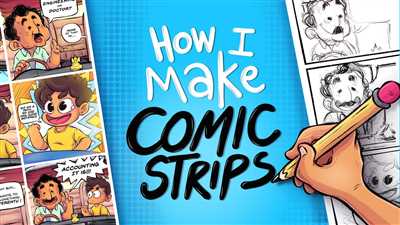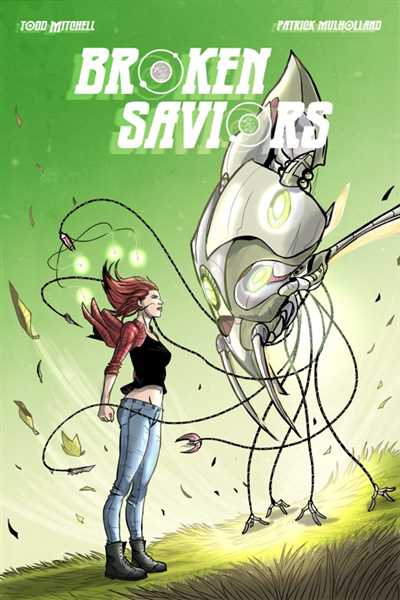
Are you ready to create your own comic? Whether you are a seasoned artist or just starting out, these tips will help you bring your ideas to life and create a unique and original comic that stands out. From brainstorming and character creation to design and publication, this guide will take you through the steps of creating a finished comic that you can be proud of.
First, you need to come up with your comic’s concept. What is the story you want to tell? Who are the characters? What is the setting? Take some time to imagine your comic in your mind and write down your ideas. Consider the type of comic you want to create – will it be a single-page strip, a scrolling webcomic, or a full-length graphic novel? Keep these characteristics in mind as you develop your concept.
Next, it’s time to bring your characters to life. Choose a few main characters that will drive your story forward and create small images of them. Think about their appearance, personality, and background. Don’t forget about their dialogue – comic bubbles are typically used for characters’ speech. You can hand-draw your characters or use digital tools to create high-resolution images in full color.
Now, let’s talk about the comic strip itself. To make it easier for viewers to follow the story, it’s important to create a clear and well-structured layout. Divide the space into panels using black lines, and place the panels in the order that best fits your narrative. Each panel should contain a different scene or action. Consider the pacing and flow of your comic, and make sure the reader can easily navigate from one panel to the next.
When it comes to the design of your comic, there are many options to choose from. You can go for a more traditional look with black and white drawings, or experiment with different colors and styles. Keep in mind that the design should complement the story and help convey the mood and atmosphere. Don’t be afraid to try out different techniques and find a style that feels right for your comic.
Once your comic is finished, you have several options for publishing it. You can print physical copies of your comic and distribute them, or you can publish it digitally as an e-book or on a website. There are many online platforms like MakeBeliefsComix that can help you create and publish your comic. Consider your target audience and choose the option that suits you best.
Creating a comic is a fun and rewarding process that allows you to unleash your creativity and share your stories with others. Don’t be afraid to experiment and try new things – the more unique and original your comic is, the more it will stand out. So gather your ideas, put pen to paper (or stylus to tablet), and start creating your own comic masterpiece!
DON’T FORGET OUR HELP 4 STUDENTS SECTION

If you’re looking for help and guidance in creating your own comic, don’t worry, we’ve got you covered. In this section, we’ll provide you with some valuable resources and tips to make the process easier.
1. Research and gather ideas: Start by researching different comics and comic books to get inspiration. Look at the different art styles, colors, and designs that are used. Take note of the characteristics that make each comic unique.
2. Decide on your characters: Imagine the characters that will be in your comic. Think about their personalities, appearances, and the roles they will play in your story. You can draw them by hand or use digital tools like drawing tablets or software.
3. Plan your story: Write an outline or script for your comic. Think about the plot, the setting, and the dialogue between characters. Consider using narration or thought bubbles to add depth to your story.
4. Create the layout: Decide on the number of panels you want to use on each page. This will depend on the length of your story and the amount of space you have available. Use simple black lines to divide the panels and leave enough space for the characters and text.
5. Draw and color: Start drawing your comic by bringing your characters and scenes to life. Add color using pencils, markers, or digital coloring tools. Play with different colors to create the desired mood and atmosphere.
6. Add dialogue and text: Use speech bubbles or text boxes to show what your characters are saying. Write the words in a clear and easy-to-read font. Make sure the text is placed in a way that guides the viewers through the story.
7. Edit and refine: When you’re finished with the drawing and coloring, take the time to review your work. Make any necessary changes and ensure that the story flows well from one panel to the next.
8. Share and print: Once your comic is ready, share it with others to get feedback and views. You can publish it online, print it out, or even turn it into an e-book. Consider using websites like MakeBeliefsComix to create and view your comics in a digital format.
Remember, the most important thing is to have fun and let your imagination run wild. Don’t forget that we are here to help you along the way. If you have any questions or need further assistance, don’t hesitate to reach out to us. Good luck with your comic creation!
Characteristics of good comic books

Creating a good comic book involves more than just drawing a few characters and writing a simple story. There are several important characteristics that make a comic book stand out and engage readers. Here are some key elements to consider:
1. Unique and original characters: A good comic book should have well-developed and memorable characters that readers can connect with. These characters should have distinct personalities, motivations, and arcs that evolve throughout the story.
2. Compelling storytelling: Good comic books have a strong narrative that keeps readers hooked from the first page to the last. The story should have a clear beginning, middle, and end, with a well-paced plot that keeps readers engaged and interested.
3. Visual appeal: Comic books are a visual medium, so the artwork should be visually appealing and engaging. The drawings should be detailed, well-composed, and able to convey emotions, actions, and environments effectively.
4. Effective use of colors and space: Comic books rely on the use of colors and space to convey mood, tone, and atmosphere. The colors should be carefully chosen to enhance the storytelling, while the use of space should allow for easy reading and comprehension.
5. Dialogue and word bubbles: The dialogue in a comic book should be well-written and natural, giving each character a unique voice. The word bubbles should be placed strategically to guide the reader’s eye through the panels and make the dialogue easy to follow.
6. Creative panel design: The way panels are arranged on a page can have a significant impact on the storytelling. Good comic books often have creative and dynamic panel layouts that add visual interest and enhance the narrative.
7. Attention to detail: A well-crafted comic book pays attention to even the smallest details. From the lines and shading in the artwork to the placement of text and sound effects, every element should be carefully considered and executed.
8. Ability to leave room for the reader’s imagination: Good comic books don’t spell everything out for the reader but leave some things open to interpretation. This allows readers to engage with the story on a deeper level and use their own imagination to fill in the gaps.
9. Engaging storytelling techniques: Comic books offer various storytelling techniques, such as flashbacks, narration, and visual symbolism. Good comic books use these tools effectively to enhance the narrative and create an immersive reading experience.
10. Well-researched and accurate information: If your comic book is based on real-world events, locations, or cultures, it’s important to conduct thorough research to ensure accuracy and authenticity. This attention to detail can make the story more believable and relatable for readers.
Remember, creating a good comic book is a process that requires time, effort, and continuous improvement. Don’t be afraid to experiment with different styles, storylines, and characters to find your unique voice and create comics that resonate with readers.
Drawing the Comic
When it comes to drawing the comic, you can let your imagination run wild. From unique and different characters to small details that add a special touch, this is your opportunity to bring your story to life visually.
If you are creating a comic strip, take into consideration its characteristics: it should be a small view into the world you have created. Remember that your readers or viewers may not have a lot of time to spend on each strip, so make sure it is easy to read and understand.
Before you start drawing, think about the overall design of your comic. How would you like the pages to look? How would you like the characters to be portrayed? Have these ideas in mind as you begin the drawing process.
There are many different sources you can use to help you with the drawing process. One good source is the website makebeliefscomix.com, which provides a variety of tools and templates to choose from. This website allows you to create your own comic strips and even has a section where you can write the dialogue and narration.
When drawing your comic, open up some space in your mind and let your ideas come to life on the page. Don’t forget about the use of colors. While some comics are more simple and use black and white, others use a wide range of colors to make their characters and images pop.
If you are drawing by hand, make sure you have a good resolution when scanning or taking a photo of your finished work. This will help when you are ready to print or share your comic online. Alternatively, if you are creating a digital comic, there are many options available for creating and sharing your work.
Regardless of the method you choose, always leave room for improvement. Keep researching and learning from other comics and books. Look for inspiration in the works of artists like Bill Zimmerman, who has shared his tips and experiences in the e-book “Creative Writing Careers”.
Finally, remember that comics are meant to be enjoyed, so have fun with the process and don’t be too hard on yourself. Whether your comics get published or not, they are a unique expression of your creativity and a reflection of your storytelling abilities.
Help your students create their own comics by providing them with the necessary tools and guidance. By encouraging them to draw and write their own stories, you are helping them develop their creativity, communication skills, and visual literacy.
So, grab a pencil or open up your favorite drawing software, and start creating your comic masterpiece!
Are you ready to create a comic strip?
Creating a comic strip can be a fun and creative way to express your ideas and tell a story. Whether you are an aspiring artist or writer, or just someone who loves comics, this guide will help you get started in creating your own comic strip.
Before you dive into creating your comic strip, it’s important to do some research and gather inspiration. Look for books and online sources that showcase different comic strip styles and characteristics. This will help you understand the different options available to you and choose a style that suits your story and characters.
Once you have a good idea of the style you want to create, it’s time to design your characters. Think about what your characters look like, their personalities, and how they will interact with each other in the story. Remember to keep in mind the space on your comic strip page, as you don’t want to overcrowd it with too many characters.
When it comes to drawing your comic strip, you have the option to go digital or traditional. If you prefer to draw by hand, make sure to use a good quality paper and pens or pencils. If you choose to go digital, there are many software options available that can help you create and manipulate your drawings.
When designing your comic strip, don’t forget about colors. Whether you choose to use black and white or add colors, make sure they enhance the story and help the viewers understand the narrative. Colors can create mood and atmosphere, so choose them wisely.
In addition to drawing, words play a crucial role in comics. Think about the dialogue and narration bubbles that will accompany your drawings. The words you choose have the power to bring your characters to life and make the story more engaging and entertaining.
Once you have your characters, drawings, and words, it’s time to put them all together. Create panels by dividing your page into sections, and place your characters and dialogue in each panel. Remember to consider the flow and pacing of your story as readers will typically view your comic strip by scrolling or flipping through pages.
When you’re finished with your comic strip, take a step back and view it as a whole. Does it tell the story you imagined? Is the resolution clear? Make any necessary edits or adjustments to ensure your comic strip is the best it can be.
Now that you know how to create a comic strip, it’s time to let your imagination run wild. Whether you print your comic strip or share it online, don’t be afraid to share your work with others. Comics have the power to makebeliefscomix and inspire, so embrace your unique vision and let your creativity come to life.
Sources
When it comes to creating a comic, there are plenty of sources you can turn to for inspiration. Here are a few options to consider:
Your own imagination: The best ideas for characters and storylines often come from your own mind. Take some time to think about the characteristics and personalities of your characters, as well as the overall theme and plot of your comic.
Research: If you’re looking to create a comic based on a specific topic or genre, it can be helpful to do some research. This can provide you with more ideas and help you come up with a unique and engaging story.
MakeBeliefsComix: This online tool allows you to create comic strips using pre-made characters, backgrounds, and speech bubbles. It’s a great option if you want to create a comic quickly and don’t have much drawing experience.
Images: If you’re more comfortable with drawing by hand, you can create your own comic using paper and pencil. Don’t forget to leave enough space for dialogue bubbles and narration boxes.
Color options: When creating a digital comic, you have the option to use different colors for your characters and backgrounds. This can make your comic more visually appealing and help it stand out from others.
Print resolution: If you’re planning on having your comic published, it’s important to consider the print resolution. The higher the resolution, the better the quality of your comic will be when printed.
Originality: In this section, don’t forget to let your imagination run wild and come up with a unique comic. Viewers are always looking for something different and original.
Well-drawn characters: A good comic strip should have well-drawn characters that are easy to view and understand. Lines should be clean and the characters should be easily identifiable.
Zimmerman, E.-B. (2010). Make Beliefs to Spark Your Writing. AZ: Sloth Publishing. This e-book can help students create comics and use them as a tool to improve their writing skills. It provides tips and guidance on the entire process of creating a comic, from drawing the characters to writing the dialogue.
Don’t forget to choose the sources that work best for you and your comic. Remember, the most important thing is to have fun and enjoy the process of creating your own unique comics.









